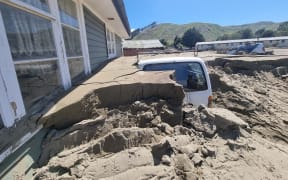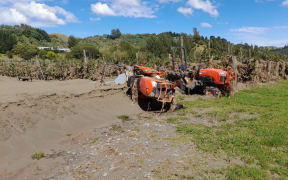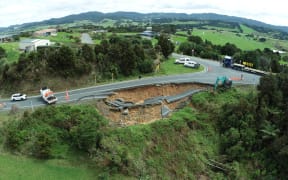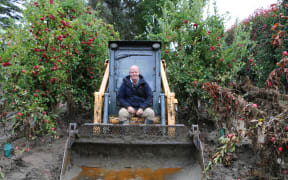
Damaged vehicles, broken powerlines and piles of silt line State Highway 5 in Esk Valley after Cyclone Gabrielle. Photo: RNZ / Jemima Huston
There are tonnes of silt smothering the East Coast in badly hit flood areas but what exactly is it and where did it come from?
Te Pūnaha Matatini Centre of Research Excellence on Complex Systems principal investigator professor Troy Baisden spoke to RNZ Afternoons.
What is silt?
Silt was a particle size of soil, Baisden said.
"It's the kind of particle size that if you put it between your teeth you would know there's something gritty there but it would feel smooth to your finger tips."
Where does silt come from?
A lot of New Zealand's east coast rocks derived from silt stone, or mud stones, Baisden said.
"Those are silt -primarily - sized particles that have been deposited usually out at sea at the end of the river mouth."
This storm event represented past events that were uplifted into the hill country in the eastern North Island, he said.
"It started out as the silt that came out of rivers in events like this and that silt got deposited on the ocean floor, got compacted a little bit but in terms of rocks is still what we'd call a soft rock and then it's been uplifted into the hills."
If you drove from Napier, Wairoa and onto Gisborne you would drive through hills covered in soil that was weathering the soft rock, he said.
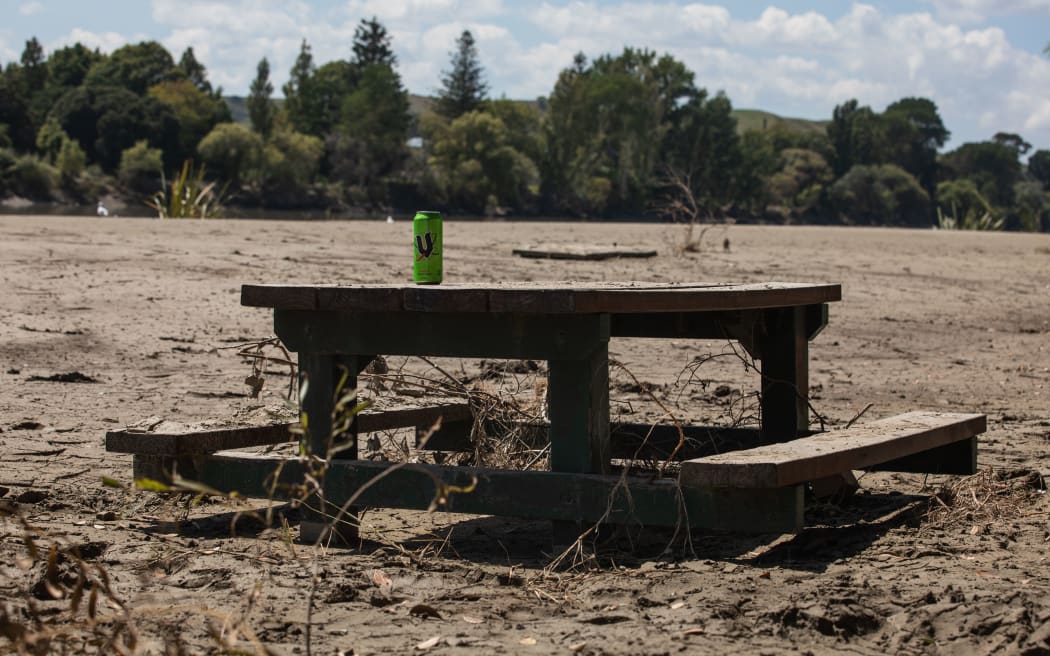
Photo: RNZ / Samuel Rillstone
Why does silt come down in storms like Cyclone Gabrielle?
"What happens in the storm is that about the upper metre of soil can turn into landslides in big storms - storms that have more than 200 or 300mm of rain."
The landslides could cover 20-30 percent of the hill country, he said.
That washed down and got concentrated in river valleys like Esk and Waipoa.
It was a natural process but one amplified because "climate change amplifies the storms ... the way we've used the land has amplified the degree of sedimentation coming from the landscapes.
"Pastoral farming in particular has really enabled the landslides, the gullies and the earth flows to get loose because we've removed the roots from the forest that used to hold the soil together."
After Cyclone Bola there was a big push to plant pine back into the landscape to hold the soil together, but whether these forests were still fully protecting the soils was the question to ask, Baisden said.
"The best protection would be to try to get these areas back into native forest."
How does silt at a river mouth in the ocean get up into the hills?
When the silt went out of the river mouth the particles collected together and settled onto the sea floor.
"The sand, as you probably have noticed, likes to stay at the beach and fall out very quickly and that's why we get concentrations of silt a bit further out in the ocean.
"Those piles up. Just image in year after year, storm after storm, piles of silt hundreds of metres thick, maybe kilometres thick, piling up off the east coast of New Zealand."
The east coast of New Zealand was along the plate boundary, he said.
The fault was offshore but what happened onshore was that the sediments got uplifted.
"They go up kilometre after kilometre until they're being eroded and we get the hill country that you see as you drive from Napier up to Gisborne."
What does different terrain have to do with silt?
Three terrains generated the sediment we had been seeing, Baisden said.
Other than the hill country terrain, some areas around Gisborne generate a gullying terrain where streams advance up into steep mountain slopes at the tops of their stream channels.
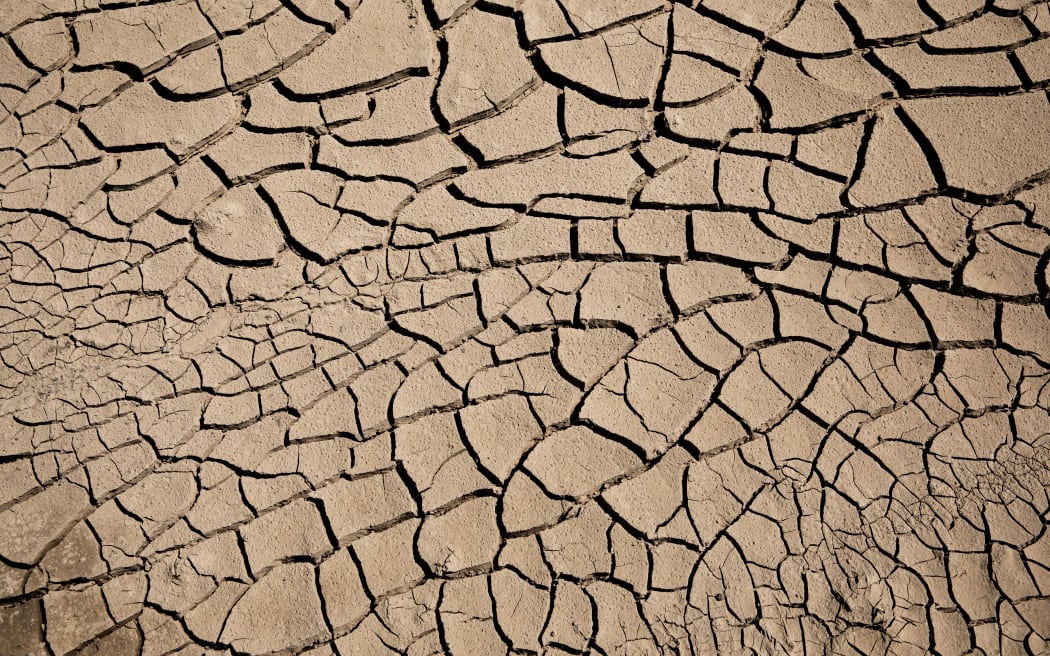
Photo: RNZ / Samuel Rillstone
There were also earth flow terrains near Ruatōria.
"They're all slightly different rocks with slightly different things going on with them and they're all spectacular landscapes that are defined by the fact that they're just so soft that you get huge sediment volumes."
The landscapes were intense and widespread and scientists from all over the world came to study it, Baisden said.
Where should you put silt when cleaning up?
Historically it was left in the landscape where it became soil, he said.
"Many of our soils now are the silt of the past, they're the storm events like this of the past, they became fertile soil and left to become soil, there's nothing to be afraid of."
If you did not need to move the silt, it would become soil and fertile if you sowed it.
"It may not be as fertile as soil that's been there for a while but in general ... the rejuvenation of the New Zealand landscape through events like this is what's made New Zealand so fertile."
